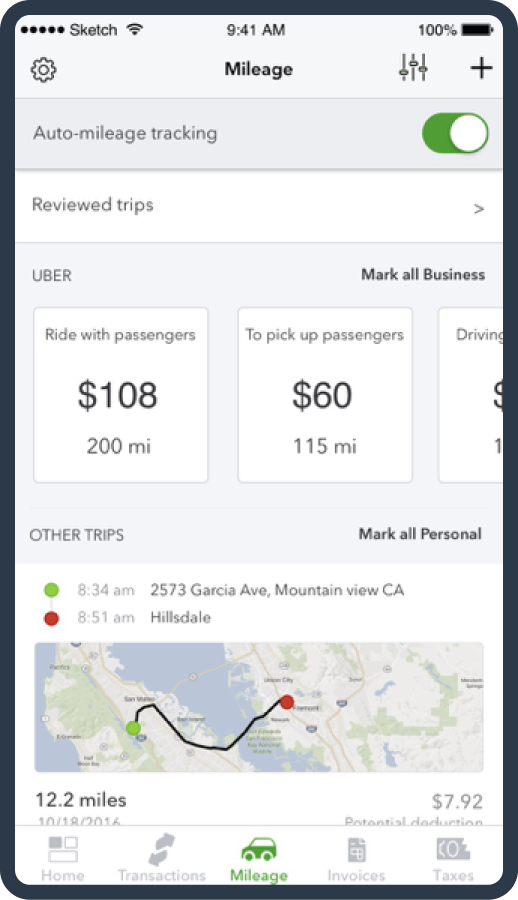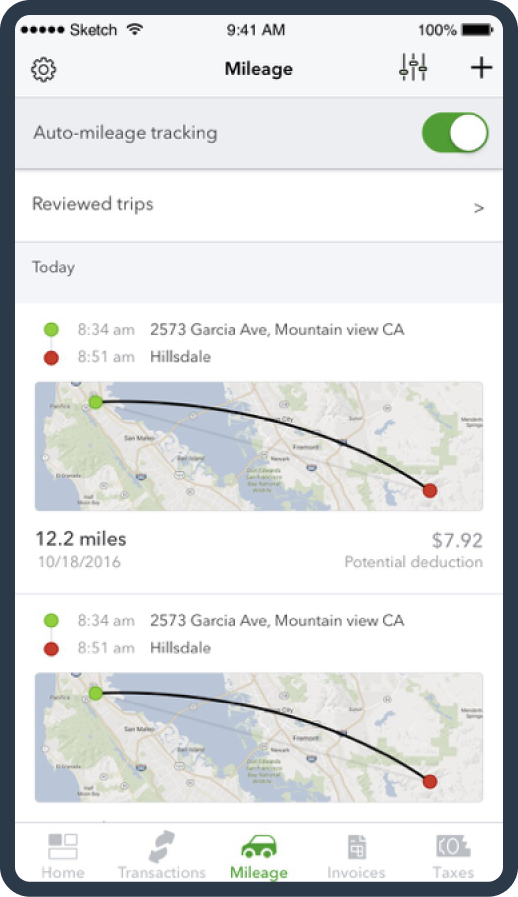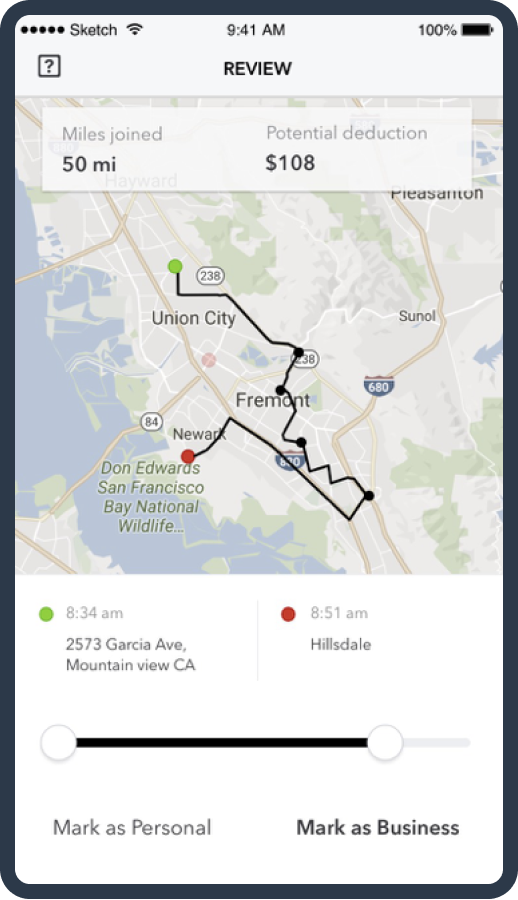
Background
QuickBooks Self-Employed is a tool that helps self-employed individuals and independent contractors keep track of their finances, so they can maximize their tax deductions when they file their taxes.
If tracked correctly, mileage could be one of the biggest deductions for Self employed individuals (Avg deduction ~$7.4k per person).
The IRS requires these individuals to maintain a record or log of all the business miles they claim on their taxes.
Role and contribution
As the interaction designer, I created the research plan, conducted the user research, created the wireframes, mapped out the use cases for our global launch and designed scalable components that can be used across the QuickBooks ecosystem.
Team composition: An Interaction designer (Me), a Visual designer and a PM.
Customer problem statement
As a Self- Employed individual, it is hard and time consuming to maintain a physical log for each trip, and if not done correctly, it could lead to me getting audited, and that leaves me stressed and unable to concentrate on my work.
Research and findings
The goal of this preliminary research was to understand how self employed individuals tracked their mileage in real world scenarios, their driving patterns and mobile usage behavior. I created a research plan and with the help of my PM, conducted in person interviews, contextual inquiries and ran a survey. We were able to narrow down our focus to these 4 findings:
User behavior: On-the-go, Distractible, mobile-friendly.
Most people use calendar apps to keep track of their day
Estimation is very common when it comes to mileage tracking and it makes users liable during tax audits.
Competitors with automatic trip-tracking features available in the market, but hesitancy in adoption due to battery drainage issues
Explorations for mileage log layout
I created variations of how trip data could be organized and sorted within the app to test with users. During testing, I focused primarily on the trip information architecture, ease of recognition of trips, comprehension and ease of sorting of trips.
Parts of the mileage tracker experience
The switch lets users know if their location is being tracked and gives them a control to turn it off if they don’t need their locations to be tracked. Users preferred a visible and easy to reach option to have better control over their location privacy.
A trip cell is the digital representation of an individual trip. Users preferred using maps over addresses to identify locations, especially if they drove around a lot as the maps gave them a sense of spatial awareness. Other important pieces of information in recognizing trips were: Date, Time, City of trip start / end and distance driven.
As for the order of the trip log, explorations with a reverse chronological order of the trips tended to perform better than ones with other ways to order trips, mirroring the initial findings of calendar usage.
Users preferred a quick and easy way to sort trips into reviewed or unreviewed buckets. The interaction of swiping to the right or left to categorize trips performed the best as it was easy to do single handedly and during multi tasking.
Crafting the final solution
Using these components, I created wireframes for the E2E mileage tracking experience. The visual designer and I then worked together to create the iOS, Android and Web experiences. I focused on creating the native interactions, patterns and navigation models for each of the platform while the visual designer focused on platform specific visual standards, QuickBooks branding and pattern consistency between other QuickBooks products. Shown here is an example of the process.

Wireframe of the mileage tracker page

Android version of the mileage tracker page

iOS version of the mileage tracker page

Web dashboard
Designing scalable components
The mileage tracker experience was launched in the US first, but we wanted to scale it to other countries and other products within the QuickBooks ecosystem. I worked with our global teams to identify country specific requirements for mileage tracking and with other product teams within the ecosystem to identify product areas where our components could be used. I then created a core set of easily customizable location focused components that were added to the overall mobile design system.
Results
Launched in US, UK, AU, CA and ZA.
Users on an average logged $7.4K in mileage deductions per year in the US.
~ 14.5 million business trips logged in the last 1 year across all countries.
~ 400k unique business purposes created in the last 1 year.








